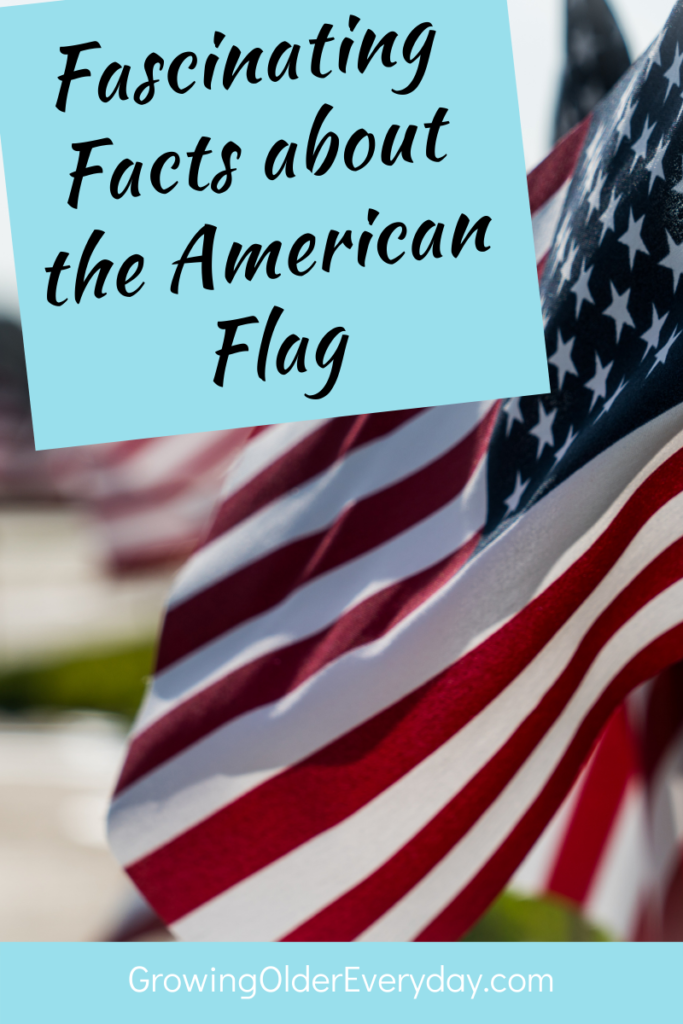
I would hope it would be impossible to find a citizen of the United States that didn’t know what our flag looked like. Many people, however, know very little about the American flag’s history. Here are over a dozen fascinating facts about the American flag to help remind you of the importance of our flag.
Years ago, I requested information from the National Headquarters, Veterans of Foreign Wars of the United States. I recently came across the envelope and decided to read up on the flag since I didn’t know much about our American flag.
Our current flag features 50 stars representing the 50 states. It was the 27th flag used in the United States, starting in use in 1960, over 60 years ago. The first flag from 1777-1795 started with only thirteen stars. These stood for the original thirteen colonies. The first flag also had thirteen stripes, six being white and seven being red. The stripes remain the same today.
Historical information
A small percentage of the United States knows that the second flag had fifteen stars and fifteen stripes. That lasted from 1795-1818. The two new states added were Vermont and Kentucky. The two new states wanted to be represented equally to the original thirteen states. However, in 1818, Congress changed it back to only thirteen stripes since adding a stripe for every new state would make the flag look odd. Can you imagine if they had continued, and we would have a flag with fifty stars and fifty stripes today? It would be atrocious, don’t you think?
I learned in elementary school that Betsy Ross made the flag. However, that isn’t necessarily true. According to the Veterans, that is a legend; that isn’t true. There is no proven record of who actually made the first flag.
I always wondered why we have Flag Day since we display the flag on many National holidays. Flag day is June 14 each year. It is the anniversary date of the adoption of the United States Flag by Congress. However, Flag Day was not established in 1777 to honor the flag. It was almost 140 years later when President Woodrow Wilson made a proclamation on May 30, 1916, to establish Flag Day.
Rules for displaying the flag
Typically the flag is only displayed from sunrise to sunset when displayed outside. If you would like to display your flag outside 24 hours a day, you should have the flag illuminated during the hours of darkness.
The American flag should be raised in a rapid manner. However when it is lowered, it should be lowered slowly.
Inside a building, the flag should be staffed to the right of a speaker. It should also be in front of the audience.
However, in a school classroom, the flag should be to the left of the students in the front as they face the front of the classroom. It should be hung flat against the wall behind and above the teacher’s station, or if it has a staff, it should be on the same level as the students.
Caring for the flag
Flags may be repaired, washed, or dry-cleaned as needed. It should be hung to dry in such a manner as not to reflect carelessness or disrespect.
If a flag is no longer fit for display it should be destroyed in a dignified way, preferably by burning in private.
The U.S. flag should never be burned in the midst of a riot or protest. This is disrespectful to the flag.
When a U.S. flag is folded, there is a two-person process, with seven steps required. After folding, the flag will have visible only the triangular blue field.
Miscellaneous other facts
Saluting the flag is done differently depending on who is saluting the flag. A person in uniform should give a military salute, their fingertips of their right hand touching their cap. Civilians, whether men, women, or children, should place their right hand over the heart. If a man is wearing a hat, it should be removed and held at his left shoulder.
Our national anthem, “Star Spangled Banner,” was approved by Congress on March 3, 1931. It was written in 1814 by Francis Scott Key. The V.F.W. (Veterans of Foreign Wars) campaigned to get the “Star Spangled Banner” approved.
Memorial Day is the only day that the flag is displayed at half-staffed from sunrise until noon and then a full-staff from noon until sunset, without a Presidential proclamation. In the case of a Presidental proclamation, a flag will be half-staffed from sunrise to sunset. On Veteran’s Day, the flag is at full-staff since it is a day of celebration, not mourning, as Memorial Day is.
Ending note
This article includes only a portion of the facts available about the U.S. Flag. If you would like more information, possibly for home-schooling your children, you can write to the Americanism Department, Veterans of Foreign Wars National Headquarters, 34th and Broadway, Kansas City, Missouri 64111. Their phone number is 816-756-3390.
I always welcome comments in the section below. Feel free to leave a personal comment about the American flag or an experience you have had with it. I will respond to all comments.

